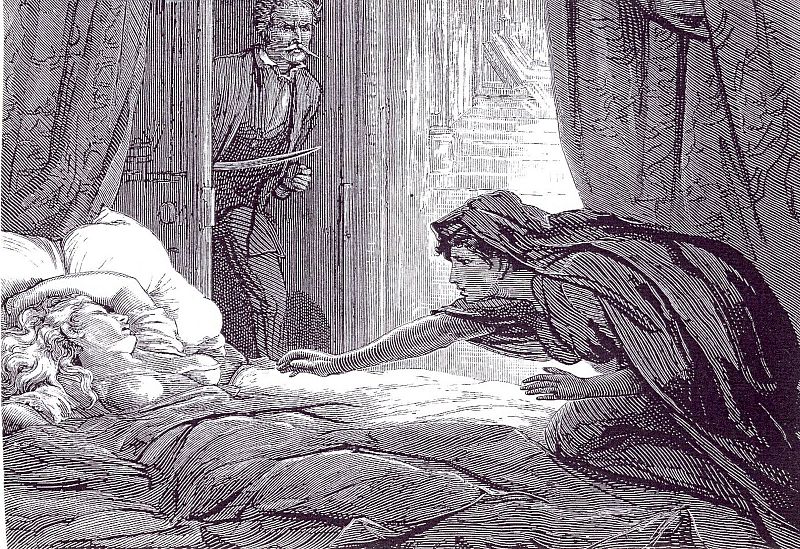
By Belinda Evangelista
J. Sheridan Le Fanu, the leading ghost writer of his time, was born in Dublin in 1814. During his early teens, his father (a Church of Ireland clergyman) took a rectorship of which his income derived from the tithes, but the family was subject to constant financial difficulty. Le Fanu studied law at Trinity College Dublin, but became a journalist and went on to own several newspapers. He was sympathetic to John Mitchel and Thomas Francis Meagher’s campaign against the British government’s indifference to The Great Famine. He was married to Susanna Bennett and together they had four children. He became best known for his horror and mystery stories. He died in Dublin in 1873 at the age of 58.
 Gary William Crawford is a poet, short-story writer and scholar of Gothic literature and has studied and written extensively about Le Fanu. Our Wild Geese Preservation Editor Belinda Evangelista emailed some questions to Crawford about Le Fanu and some of his work.
Gary William Crawford is a poet, short-story writer and scholar of Gothic literature and has studied and written extensively about Le Fanu. Our Wild Geese Preservation Editor Belinda Evangelista emailed some questions to Crawford about Le Fanu and some of his work.
The Wild Geese: J. Sheridan Le Fanu was the leading ghost-story writer of the 19th century. How did he contribute to the genre in that era?
Gary William Crawford: Without a doubt, Le Fanu may be called the father of the English ghost story. Shortly after the heyday of the Gothic novel (1764-1820), Le Fanu took the Gothic and expressed it in
realistic terms and emphasized the psychology of his characters. In an early work such as “Schalken the Painter” in 1838, Le Fanu domesticated the Gothic with descriptions of haunted interiors—literally the Gothic’s new castle of the mind.
The Wild Geese: Le Fanu perpetuated the vampire character 25 years before Bram Stoker. Did Bram Stoker consider Le Fanu’s work when writing his famed Dracula?
Crawford: Stoker most assuredly was influenced by Le Fanu. Stoker’s tale “Dracula’s Guest,” which was an abandoned first chapter of Dracula, clearly shows the influence of Le Fanu. The main thing that Stoker used was the idea of sexuality in relation to vampirism.
 The Wild Geese: I am intrigued by "Carmilla," the tale of a transgender vampire. Was Le Fanu a man before his time in bringing her into the public eye, especially in the Victorian climate?
The Wild Geese: I am intrigued by "Carmilla," the tale of a transgender vampire. Was Le Fanu a man before his time in bringing her into the public eye, especially in the Victorian climate?
Crawford: Le Fanu’s “Carmilla” is a lesbian vampire tale, very likely the first of its kind. It is highly unusual to have appeared in the repressive Victorian era.
The Wild Geese: Did his Irish background emerge in any of his works?
Crawford: The Anglo-Irish background was a very important part of Le Fanu’s works. "The Purcell Papers," composed of early Irish tales, has been studied in depth by Le Fanu’s critics. The novel Uncle Silas has been called by famous Irish writer Elizabeth Bowen as an Irish work transposed to an English setting. Le Fanu felt acutely the insular Anglo-Irish guilt that his people felt in Ireland. This insular guilt is a major aspect of Le Fanu’s ghost stories.
The Wild Geese: Can you recommend to our readership some of Le Fanu’s works for their Halloween pleasure?
Crawford: I would recommend The Best Ghost Stories of J.S. Le Fanu, edited by E.F. Bleiler, which is widely available from Dover Publications.
The Wild Geese: What else would you like to share with us about Le Fanu in this, the spookiest season of the year?
Crawford: Le Fanu wrote some of the best ghost stories in the English language. You will join the many who venerate his works.
Gary William Crawford’s webpage is an ongoing bibliography of works about Le Fanu which supplements his book on Le Fanu. http://www.lefanustudies.com/database.html
‘Carmilla’ on YouTube

No comments:
Post a Comment